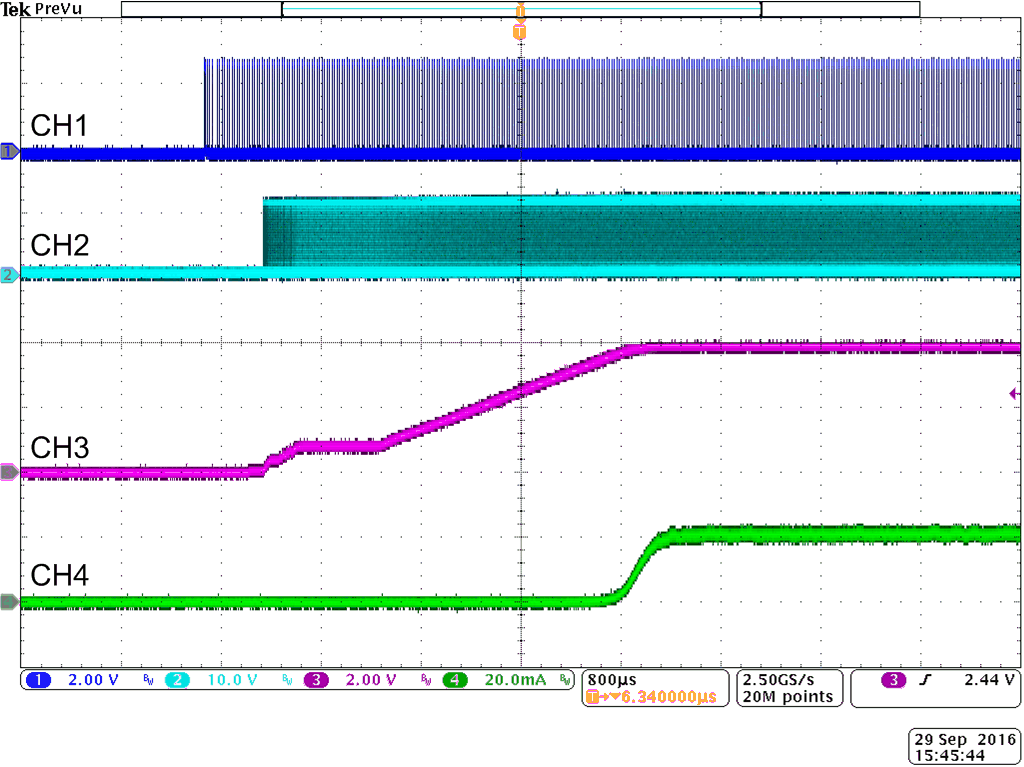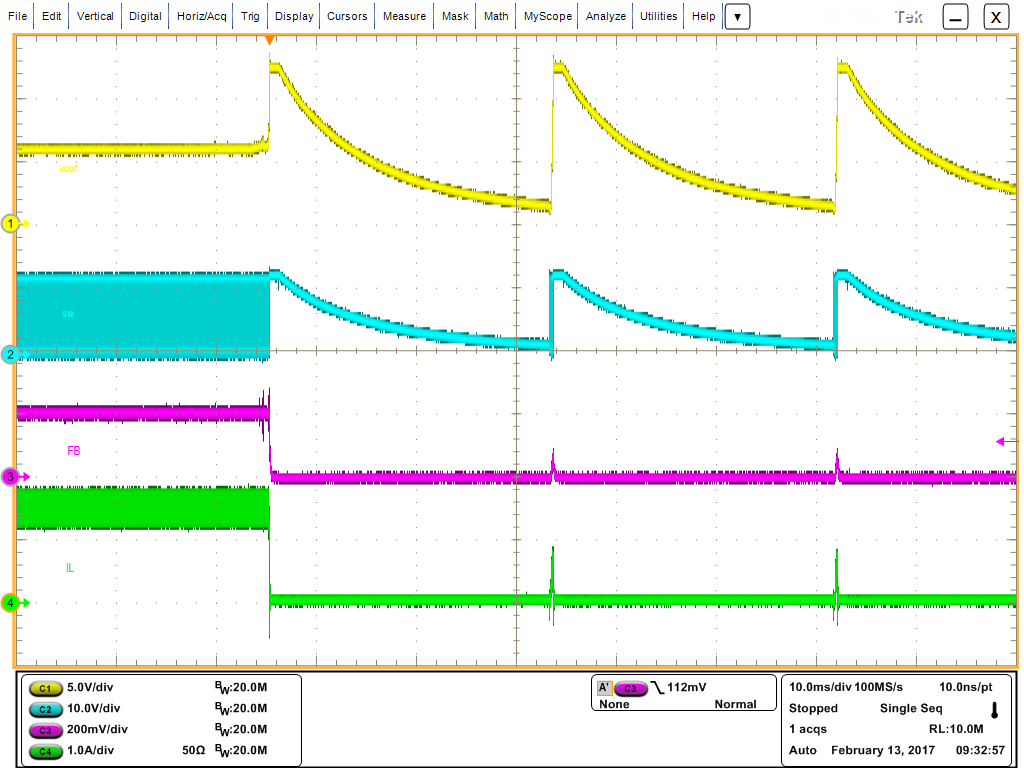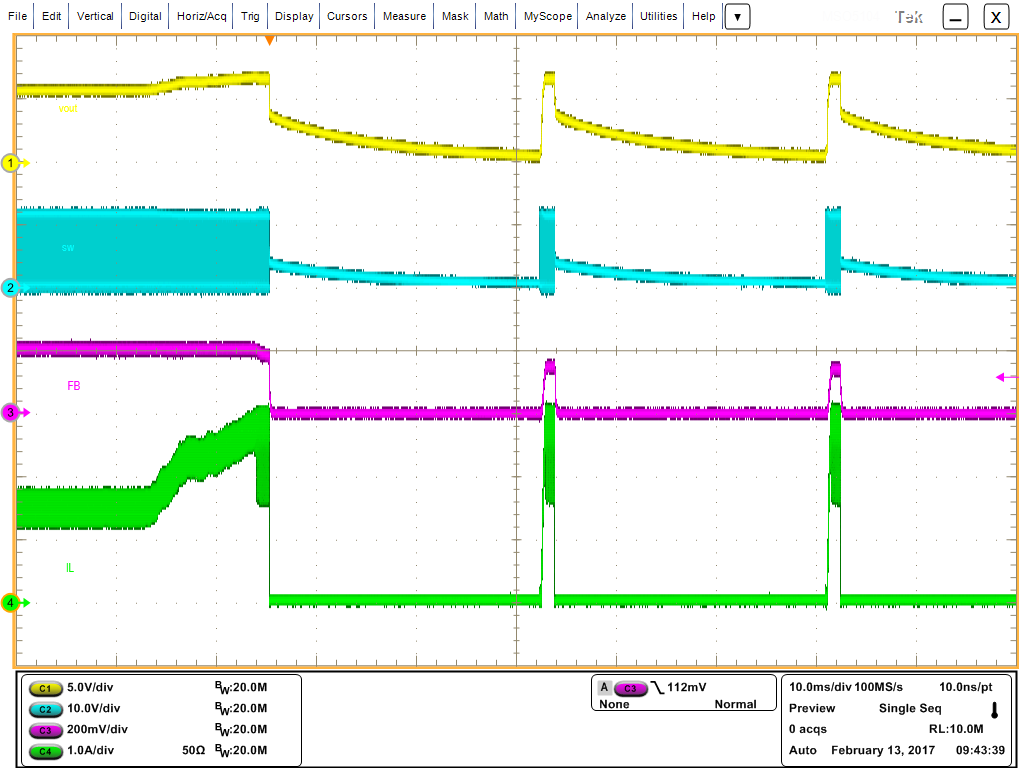SLUSCO8B November 2016 – June 2018 TPS54200 , TPS54201
PRODUCTION DATA.
- 1 Features
- 2 Applications
- 3 Description
- 4 Revision History
- 5 Description (continued)
- 6 Pin Configuration and Functions
- 7 Specifications
-
8 Detailed Description
- 8.1 Overview
- 8.2 Functional Block Diagram
- 8.3 Feature Description
- 8.4 Device Functional Modes
- 9 Application and Implementation
- 10Power Supply Recommendations
- 11Layout
- 12Device and Documentation Support
- 13Mechanical, Packaging, and Orderable Information
Package Options
Mechanical Data (Package|Pins)
- DDC|6
Thermal pad, mechanical data (Package|Pins)
Orderable Information
9.2.1.3 Application Curves
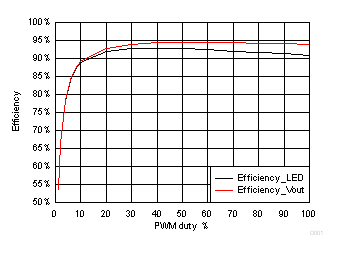
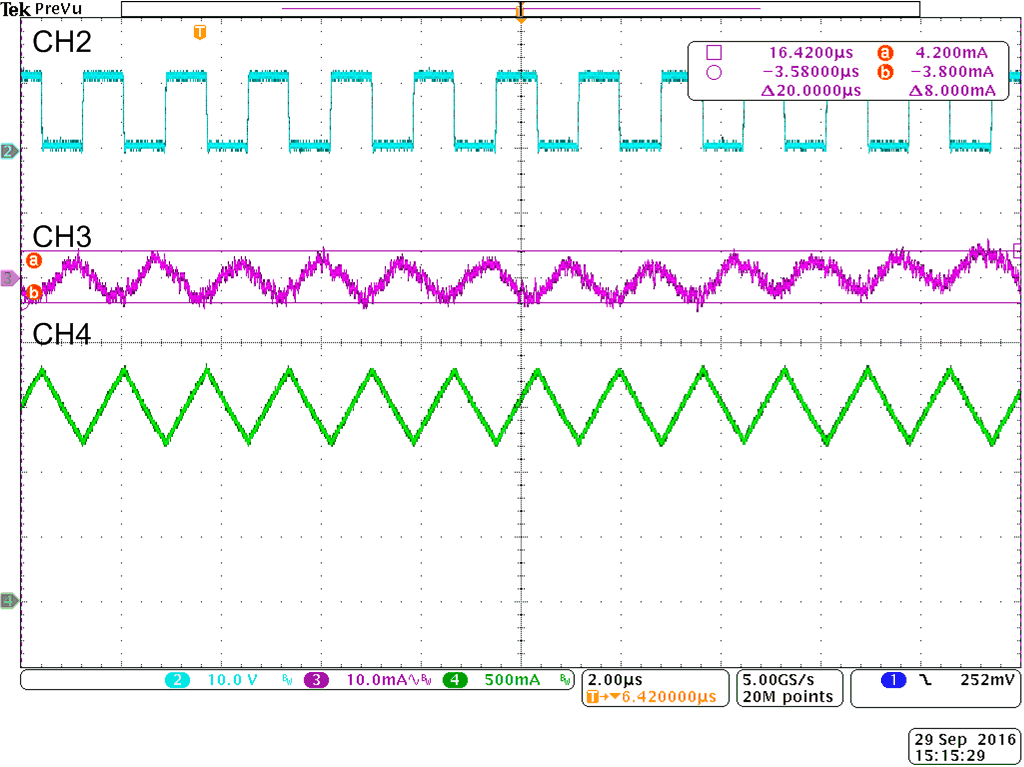
| CH2: SW | CH3: LED current | CH4: Inductor current |
| (AC-coupled) |
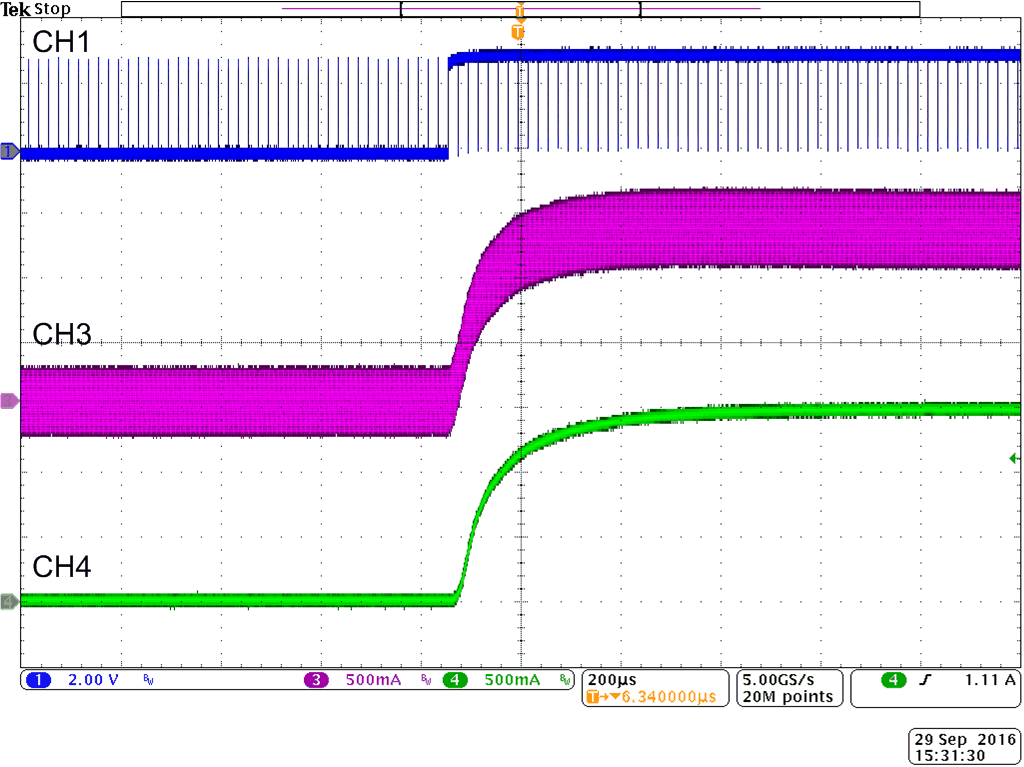
| CH1: PWM | CH3: Inductor current | CH4: LED current |
Changes From 1% to 99%
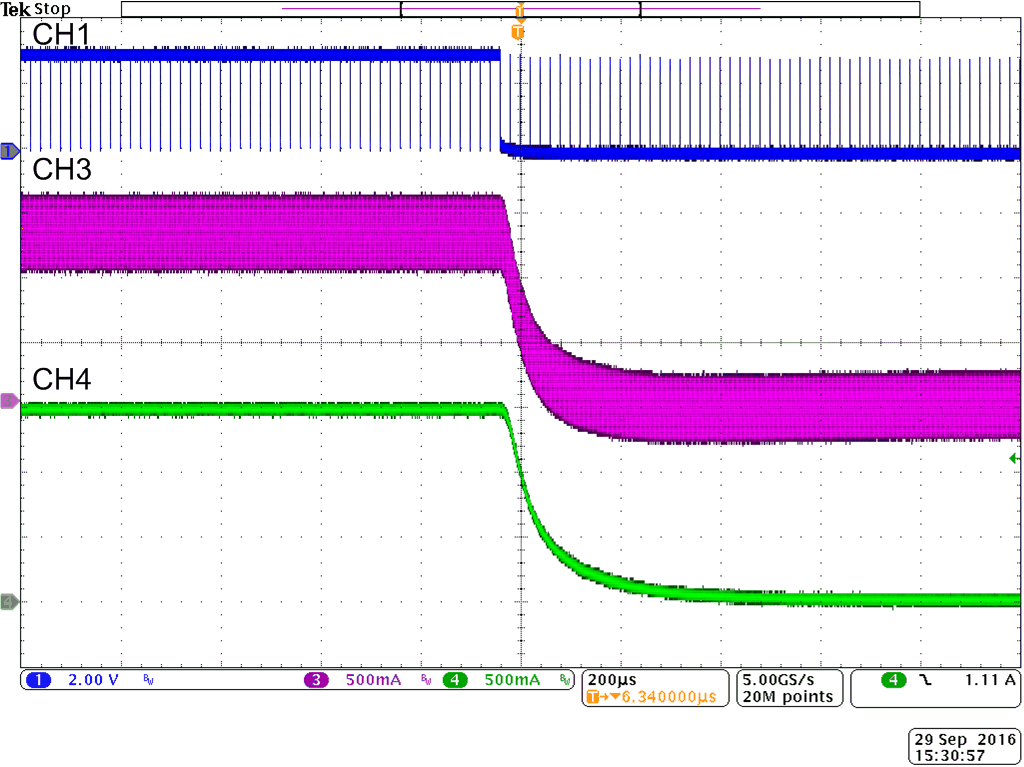
| CH1: PWM | CH3: Inductor current | CH4: LED current |
Changes From 99% to 1%
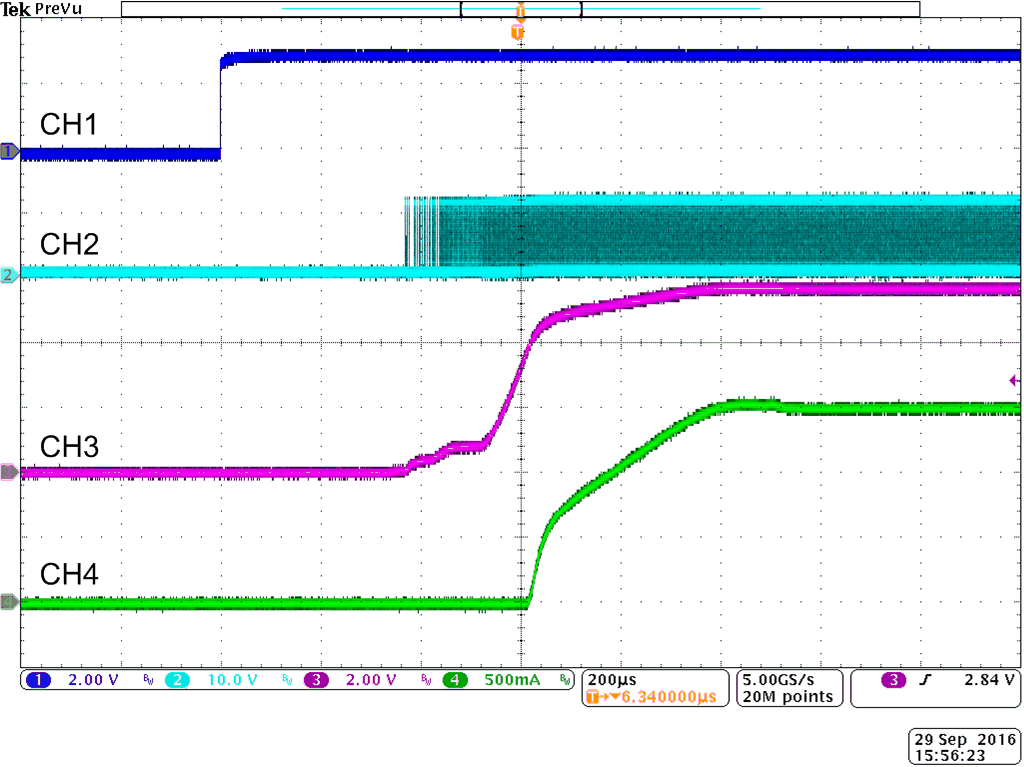
| CH1: PWM | CH2: SW | CH3: VOUT | CH4: LED current |
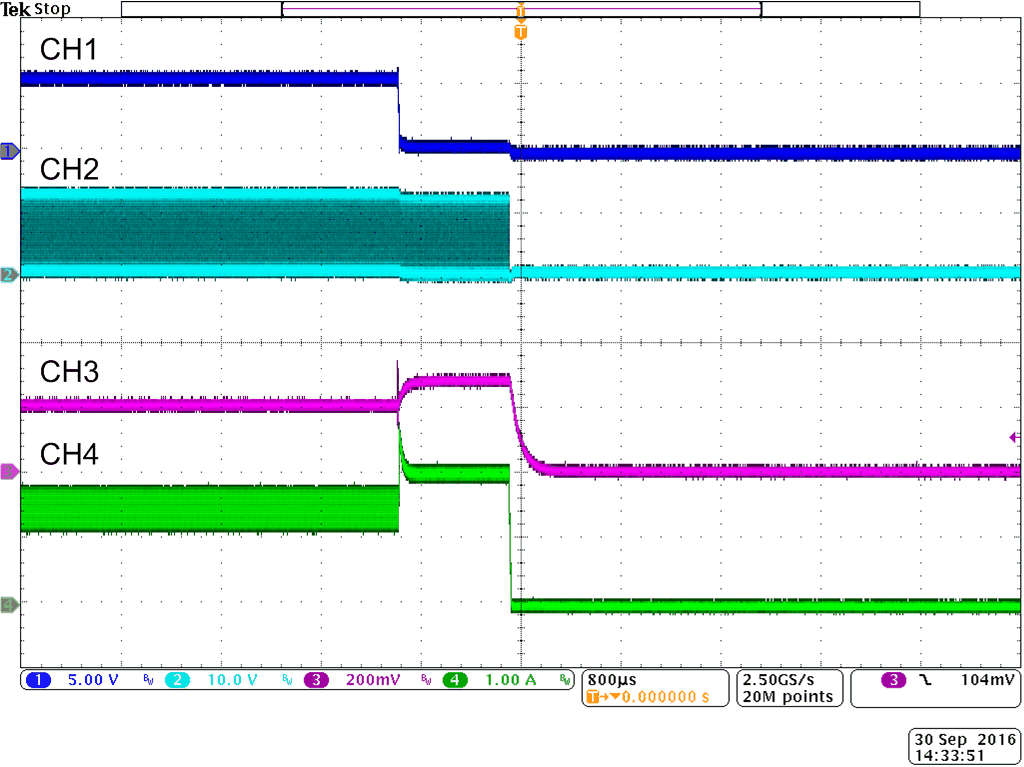
| CH1: VOUT | CH2: SW | CH3: FB | CH4: Inductor current |
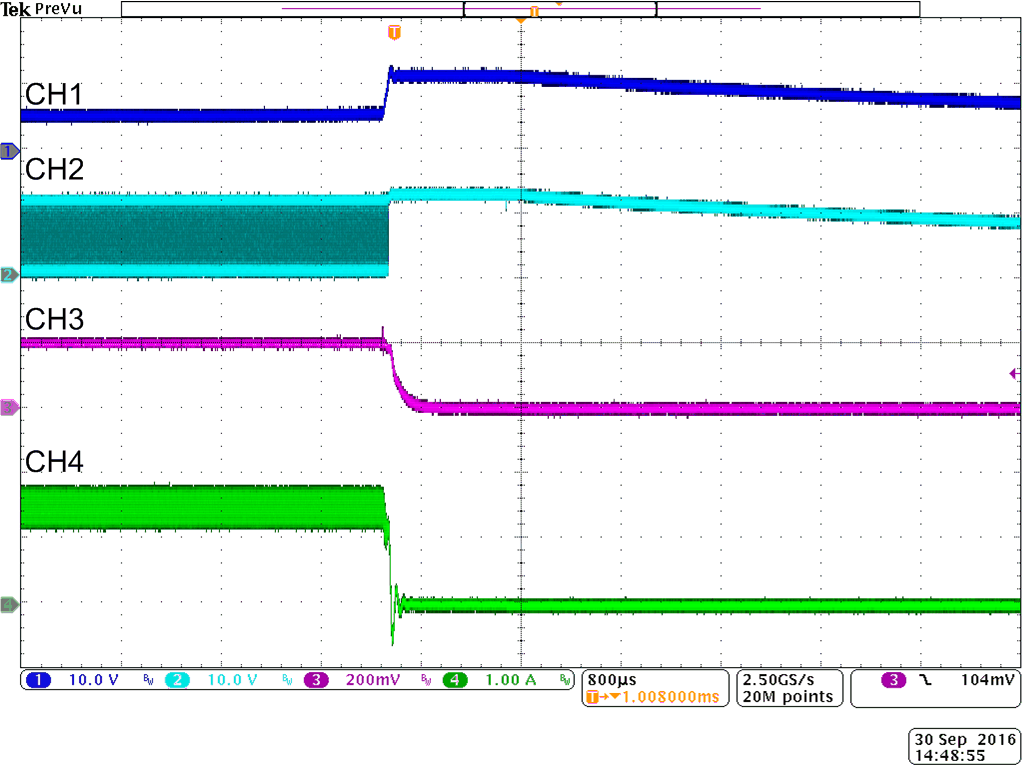
| CH1: VOUT | CH2: SW | CH3: FB | CH4: Inductor current |
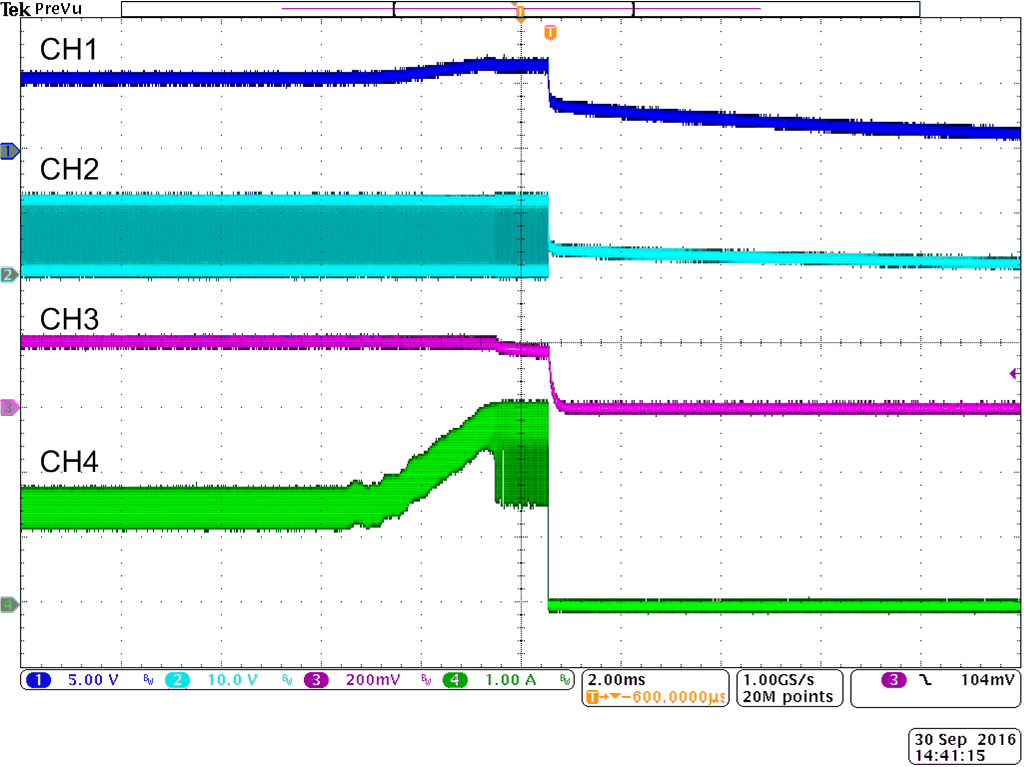
| CH1: VOUT | CH2: SW | CH3: FB | CH4:Inductor current |
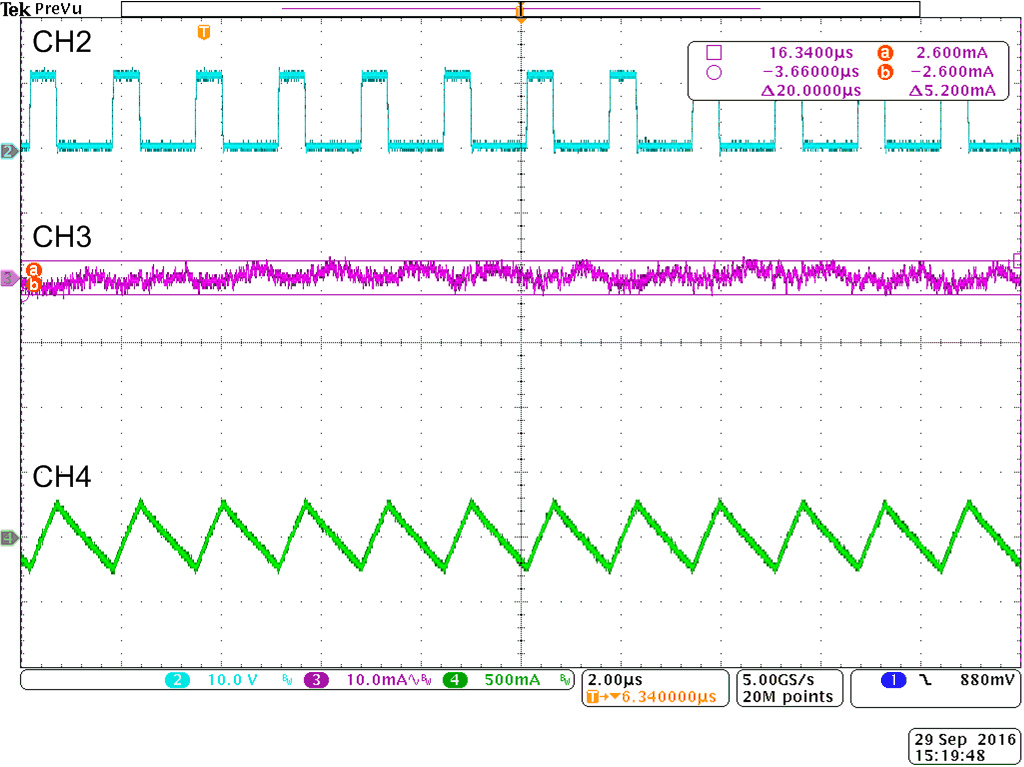
| CH2: SW | CH3: LED current | CH4: Inductor current |
| (AC-coupled) |
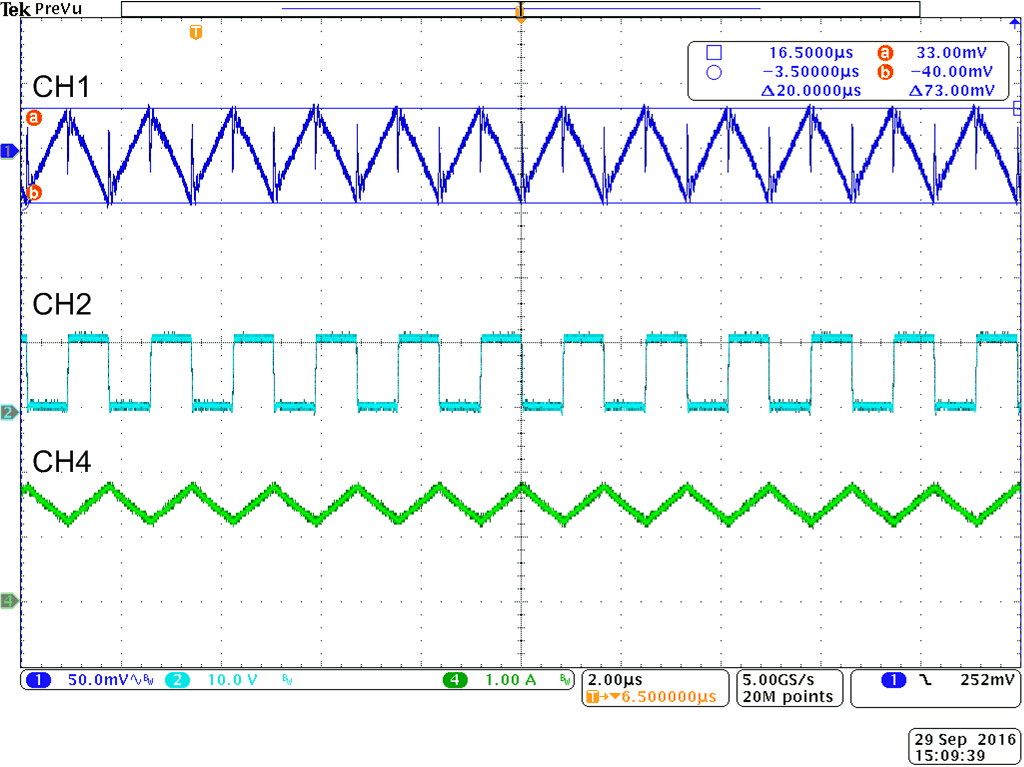
| CH1: VVIN | CH2: SW | CH4: Inductor current |
| (AC-coupled) |
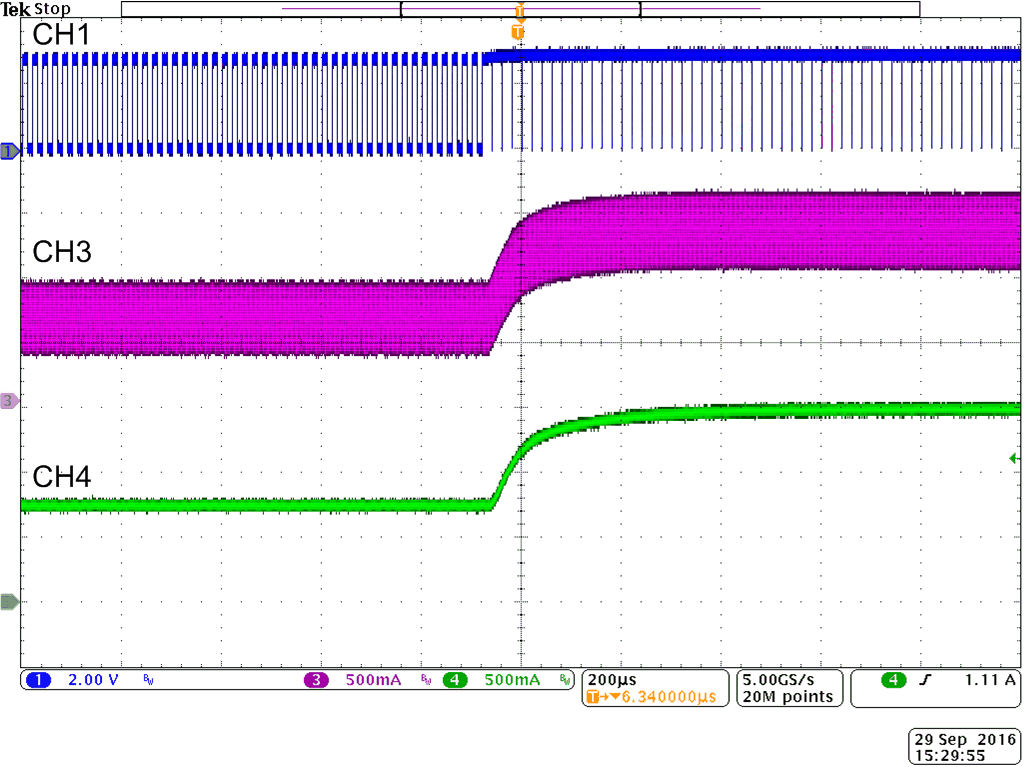
| CH1: PWM | CH3: Inductor current | CH4: LED current |
Changes From 50% to 99%
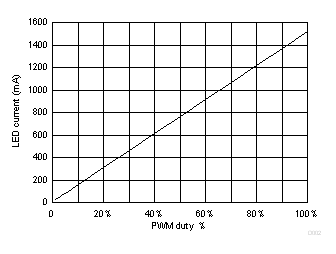
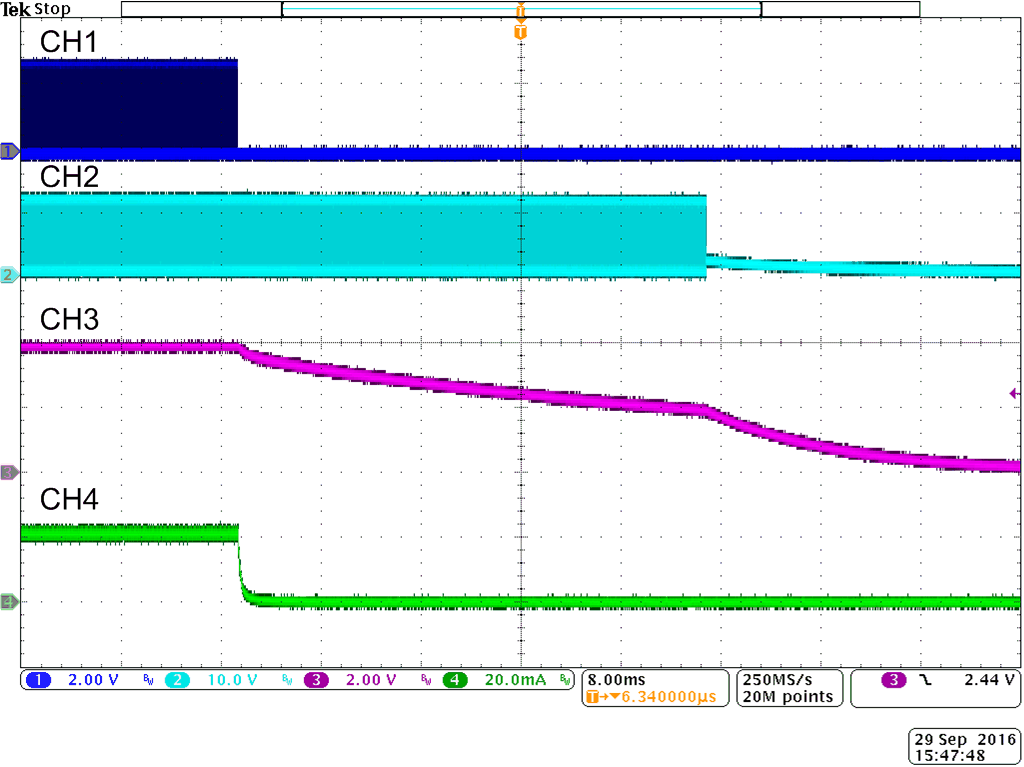
| CH1: PWM | CH2: SW | CH3: VOUT | CH4: LED current; |
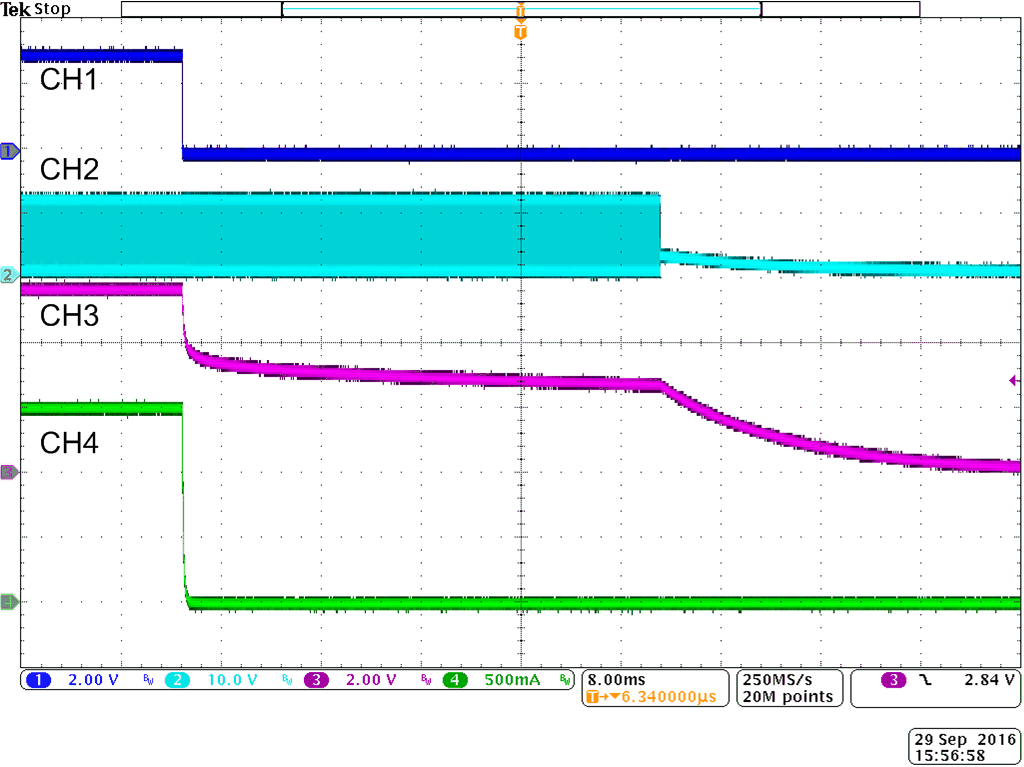
| CH1: PWM | CH2: SW | CH3: VOUT | CH4: LED current |
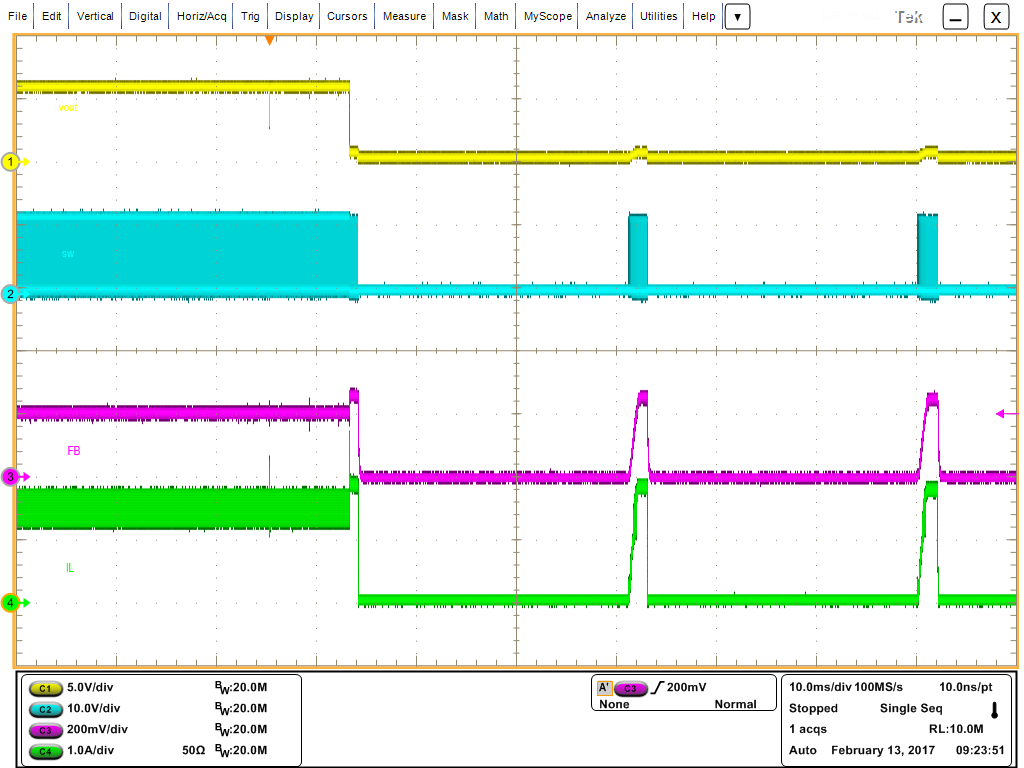
1.
Figure 35. LED Short Protection (100% PWM Duty Cycle) of TPS54201
| CH1: VOUT | CH2: SW | CH3: FB | CH4: Inductor current |
